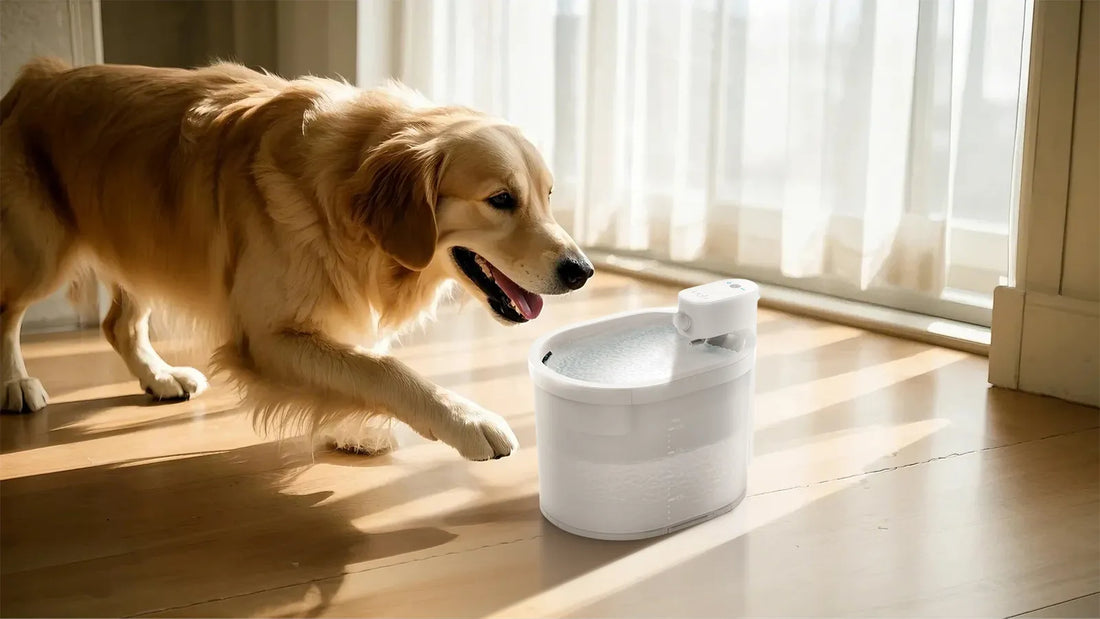Finding red worms in your dog's water bowl can be alarming and unsettling. These tiny, wriggling creatures are not only unsightly but may also pose health risks to your furry friend. Understanding what causes red worms to appear, the dangers they present, and how to effectively eliminate them is crucial for maintaining your pet's well-being.
What Are Red Worms in Dog Water Bowls?
Red worms, often referred to as bloodworms or midge larvae, are small, thread-like organisms that thrive in stagnant water. They are typically reddish in color due to the presence of hemoglobin in their bodies, which allows them to survive in low-oxygen environments. While they are not harmful to humans, their presence in your dog's water bowl can indicate poor hygiene or environmental conditions that need attention.
Common Causes of Red Worms in Dog Water Bowls
Several factors can contribute to the appearance of red worms in your dog's water bowl. One of the primary causes is stagnant water. If the water in the bowl is not changed regularly, it becomes a breeding ground for these worms. Additionally, outdoor water bowls are more susceptible to contamination, as they are exposed to dirt, debris, and insects that may carry worm eggs.
Another common cause is poor cleaning practices. If the water bowl is not scrubbed and sanitized frequently, it can harbor bacteria and parasites, including red worms. Furthermore, using untreated water from natural sources like ponds or streams can introduce these organisms into your dog's drinking water.
Potential Risks to Your Dog
While red worms themselves are not directly harmful to dogs, their presence can indicate unsanitary conditions that may lead to health issues. Consuming water contaminated with red worms can expose your dog to harmful bacteria and parasites, potentially causing gastrointestinal problems such as vomiting, diarrhea, and dehydration.
In some cases, red worms may carry secondary parasites or pathogens that can infect your dog. For instance, certain types of worms can transmit diseases like giardia or cryptosporidiosis, which can be particularly dangerous for puppies, elderly dogs, or those with weakened immune systems.
How to Prevent Red Worms in Dog Water Bowls
Preventing red worms from appearing in your dog's water bowl requires a combination of good hygiene practices and environmental management. Here are some effective strategies:
- Change Water Frequently: Ensure that your dog's water bowl is filled with fresh, clean water at least once a day. If the bowl is outdoors, consider changing the water more frequently, especially during hot weather.
- Clean the Bowl Regularly: Wash the water bowl with hot, soapy water daily, and use a brush to scrub away any residue or biofilm that may harbor worms or bacteria.
- Use Treated Water: Avoid using untreated water from natural sources. Instead, provide your dog with filtered or tap water that is safe for consumption.
- Keep the Area Clean: If the water bowl is placed outdoors, make sure the surrounding area is free from debris, standing water, and other potential sources of contamination.
Effective Solutions for Eliminating Red Worms
If you discover red worms in your dog's water bowl, it's essential to take immediate action to eliminate them and prevent their return. Start by thoroughly cleaning the bowl with hot, soapy water, and rinse it well to remove any remaining worms or eggs. You can also use a pet-safe disinfectant to sanitize the bowl.
Consider replacing the water bowl if it is old or difficult to clean, as cracks and scratches can provide hiding spots for worms and bacteria. Additionally, inspect the area where the bowl is placed for any signs of standing water or debris that may attract insects and worms.
In cases where red worms persist despite your efforts, consult your veterinarian for advice. They may recommend specific cleaning products or treatments to address the issue and ensure your dog's water remains safe and clean.
When to Seek Veterinary Advice
While red worms in your dog's water bowl are generally not a cause for immediate concern, there are situations where veterinary intervention may be necessary. If your dog shows signs of illness, such as vomiting, diarrhea, lethargy, or loss of appetite, it's important to seek professional advice promptly.
Additionally, if you suspect that your dog has ingested contaminated water or is at risk of parasitic infection, your veterinarian can perform tests and recommend appropriate treatments. Early detection and intervention can help prevent more serious health issues from developing.
Maintaining a clean and safe environment for your dog is essential for their overall health and well-being. By understanding the causes and risks associated with red worms in dog water bowls, you can take proactive steps to prevent their occurrence and ensure your pet stays happy and healthy.
Don't let red worms in your dog's water bowl go unnoticed. With proper care and attention, you can keep your furry friend's drinking water clean and free from harmful contaminants. Your dog's health is worth the effort, and a little prevention goes a long way in ensuring their safety and comfort.













